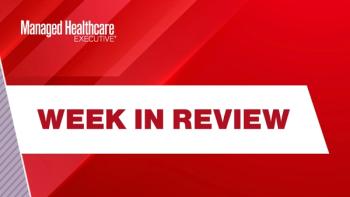
Identify those who need adherence help
Medication nonadherence drives $105 billion in annual costs.
Delays in treatment and medication nonadherence are the major reasons behind avoidable costs in the healthcare system, according to a new study released last month. Avoidable costs of more than $200 billion are incurred each year in the U.S. healthcare system, representing 8% of the country’s total annual healthcare expenditures, the IMS Institute for Healthcare Informatics found.
“This also translates to a significant cost to patients and unnecessary utilization of healthcare resources, including 400 million hospital visits annually. This could all be avoided if medicines were used more responsibly,” Murray Aitkin, executive director of the IMS Institute for Healthcare Informatics, said on a conference call with media.
Medication nonadherence drives $105 billion in annual costs. Delays in applying evidence-based treatment to patients also results in $40 billion in annual avoidable costs. After reviewing four primary disease areas: hepatitis C, diabetes type 2, atrial fibrillation, and coronary heart disease (CHD), IMS found that the largest avoidable impact to the U.S. healthcare system is in the area of diabetes, where delays increased outpatient visits and hospitalizations.
According to Tony Song, president of Diabetes Care Pharmacy and Health Program Centers, West Covina and Pasadena, Calif., “Adherence is achieved when the person is given options and understands that the ultimate goal is better average blood glucose level. This goal may be achieved by incorporating diet and exercise as in the case with newly diagnosed patient to taking oral medications or insulin in individuals with high blood sugars.”
One of the first steps toward achieving adherence is the ability to identify patients with chronic conditions, according to Stanley Goldstein, president and CEO of Patient Engagement Systems, Burlington, Vt.
“We know that health plans and medical groups need tools such as clinical decision support to create timely and effective information that will enable them to better identify, manage, and monitor their most costly patients by zeroing in on medication adherence opportunities and identifying patients that require evidence-based treatment so they can get the care they deserve, while reducing inpatient admissions and ER visits.”
Beyond adherence issues, another factor contributing to avoidable medication costs is the misuse of antibiotics which contributes to antimicrobial resistance and an estimated $34 million each year in avoidable costs. An additional $1 billion is spent on about 31 million inappropriate antibiotics prescriptions that are dispensed each year, typically for viral infections, according to IMS.
The IMS Institute for Healthcare Informatics also sees major improvements with medication adherence, which will drive down avoidable costs in the future.
“The Affordable Care Act, including incentives for a performance-based payment system and the introduction of the Accountable Care Organization, enables Medicare to really put a focus on helping support these areas. Adherence is clearly indicated in the ACO performance metric,” Aitken says.
Other factors driving U.S. healthcare costs include: suboptimal use of generics, medication errors, and mismanaged polypharmacy, according to IMS.
Newsletter
Get the latest industry news, event updates, and more from Managed healthcare Executive.

















































